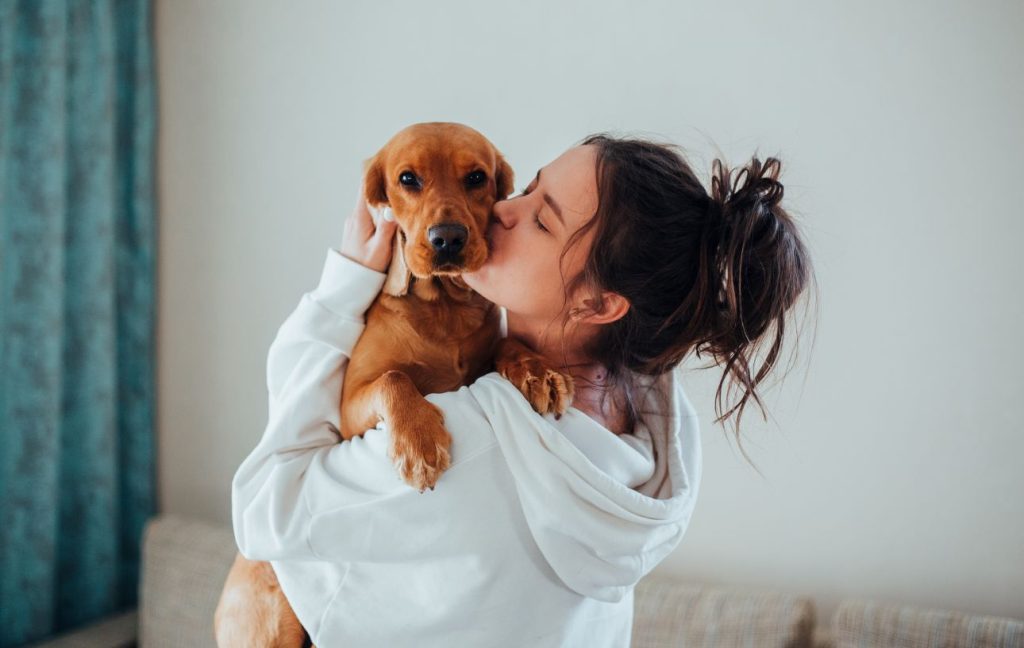You just met a new dog—or maybe you’re still trying to connect with your own.
How do you build trust with a dog?
Hint: it’s not by rushing in for cuddles or talking too much.
Let’s explore how to genuinely connect with a dog, the way they understand it.
Sit Down and Say Hello—With the Back of Your Hand
When greeting a dog for the first time, sit down and show the back of your hand.
Why not your palm? Because dogs interpret an open palm as something that might grab or restrain them.
Most people reach out after giving a treat and immediately try to pat the dog’s head. But many dogs find that scary.
Instead, let them sniff the back of your hand.
If they feel safe, they’ll lean in, maybe even rub their body against you.
That’s dog for:
“You’re okay. I trust you.”
Don’t Rush to Pet or Pick Them Up
Trying to hug or lift a dog right after meeting them is the human equivalent of saying:
“Hi, nice to meet you. How much money do you make?”
Way too personal, way too soon.
Let them approach you first. Let it be their decision.
Sometimes, Less Talk Is More
We often try to comfort dogs with words:
“Were you scared?” “Oh no, baby, what happened?”
But here’s the catch: when dogs hear repetitive human voices during stressful situations, they can mistake it for more anxiety.
In their world, vocalizing = tension.
So instead of talking, just say a calm, simple, “I’m home.”
Let your presence be the comfort—not your words.
Fear of the Doorway? Try Sitting There Together
Does your dog bark every time the doorbell rings?
It makes sense—they associate the door with you leaving or someone strange arriving.
Try this:
- Place a cushion by the entrance.
- Sit down and just hang out—read a book, scroll your phone.
- Let the space feel normal and safe again.
Later, knock softly. If your dog stays calm, offer a treat.
Repeat this, and soon your dog may associate the sound with something good, not something scary.
Be Where They Are (Literally)
Want to understand your dog better? Try this:
- Sit where they usually wait for you while you’re doing dishes.
- Lie down in the spot where they curl up when you’re on the
- couch.
- Sleep where they do (if allowed).
Don’t say anything. Just be.
Dogs value presence over performance.
You’d be surprised how much trust you build just by being there.
Mirror Their Calm With the “Mirror Technique”
One day, I met a dog who was constantly running, jumping, and couldn’t stay still.
What did I do?
I just sat quietly. I stretched, yawned, and read a book.
After an hour, the dog drank some water, sniffed me, and lay beside me.
The next time? It took 30 minutes. Then 10.Eventually, the dog no longer jumped when I stood up.
He simply trusted me.
This method is called mirror training—by staying calm yourself, the dog learns to reflect your state.
Remember: Kindness Builds Connection
Being big doesn’t make someone scary.
Neither does being small make them fragile.
Dogs aren’t naturally aggressive or fearful—they’re shaped by how we treat them.
With patience, empathy, and a little understanding of their world, any dog can become a loyal, loving companion.
So today, sit with your dog, show them your hand, maybe even yawn. And start building the kind of friendship that lasts a lifetime.
Tools of Calm: Yawning & Open Palms
Dogs use body language, not words.
Two powerful calming signals:
- Yawning
- Slowly extending your palm (not grabbing)
These signals say:
“I’m peaceful. You’re safe.”
Try showing your palm and yawning if your dog is anxious. It may seem small—but to your dog, it’s clear communication.



